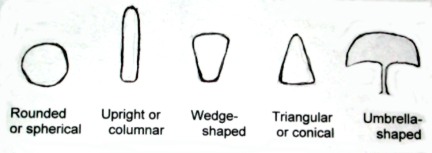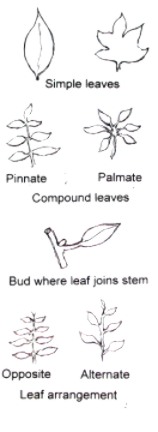
Help !
by Derek Burch
Asking questions about plant care may seem easy, but asking in such a way as to get the answer that you really need may take a little work.
Fear not! But please read on (unless you really enjoy playing 'Baffle the Botanist' or 'Humble the Horticulturist'). You wouldn't do that, would you?
Let's use the term "expert" for the person to whom you are addressing the question. The honorific may or may not be justified, but I need to call him, her or them something.If your question concerns plants outside in the garden, the expert will need to know approximately where you live: remember that an e-mail address gives no clue to this, so please say "USDA Zone 5" or "just north of Alice Springs," or whatever will set the scene effectively. If I am the expert in question, I happen to know where the most famous Alice Springs is, but if you live in Athens, please tell me if it is the one in Georgia or the one in Ohio or the one that commands the entrance to the Aegaean Sea (my apologies to all the other nice cities in the world called Athens that I fail to mention).
If the question concerns a houseplant, your hometown is not as important, although we certainly have an easier time with our houseplants in South Florida, and more flexibility in giving them a vacation outdoors, than do you guys in the frozen north. So, throw the information in - you aren't paying by the word for your e-mails, after all.
Now, if you are after the name of a plant which you bought (why couldn't the nursery tell you? Are you going back to these people?), you have to be able to describe it. Here is where the work begins!
We will leave out the part underground ( unless you want to let on to the expert that we are dealing with something that grows from a bulb and dies down during the year [that is a good clue!]). Plants may grow with a rosette of leaves without a stem until the flowers develop (think of dandelions or amaryllis), or may have a stem or trunk on which branches may form and leaves develop (think of everything else).
Leaves are one of the hardest things to describe. Let me try to make it a little clearer. They usually have a leaf stalk or petiole, and a broad area called the blade. This blade may be one broad part, or it may be divided into several broad areas that are separate from oneanother.
The leaves that have the blade divided are called compound leaves, and the confusion in describing them comes in knowing just how much of what you are looking at makes up one leaf. If you look at the place where the blade joins the stalk, or the place at which the stalk joins the stem, at one or other place you should be able to see a tiny bud waiting to grow. This is the key: a leaf always has a bud where it joins the stem, a leaflet (a single part of the blade if the blade is divided into several parts) does not have a bud there because it is not joining a stem, it is joining another part of the leaf.
So, now you should be able to describe your plant as having a stem on which leaves are carried, and you can describe the leaves as being simple (the blade is all together) or compound (with several leaflets).
If you really want to show off, you can describe a leaf with the leaflets along a central stalk as being a feather leaf (pinnately compound) or like a hand (palmately compound). You can give the size and shape of the leaf or leaflets ( round, strap-shaped, spiny and so on will do just fine).If you have the leaf versus leaflet question straight, you can also let the expert know if the leaves come off the stem right across from each other (opposite leaf arrangement) or at different places up the stem (alternate).
O.k. we are almost there. Is the plant spiny, or hairy, or shiny, or blue-green? Is it fat and spherical like a cactus? Are the leaves fleshy Like a succulent? Is there a fragrance, good or bad, from leaves or flowers? Could you fit the general shape to one of those below?

That is about all we should need concerning the green parts of the plant. Does it have a flower? Is it bell-shaped, tubular flaring at the end, flat, two-lipped or too small to describe? Does it come by itself at the end of a shoot, or in an open upright bunch, does it hang, or is it tucked in the place where a leaf joins the stem? What about colour? And fragance?
With a little bit of luck or inspiration on the expert's part, that should do it if you are looking for help with a name. Supposing that your plant has a problem. You may still need to mention roots, stem or leaves to tell where the problem is, and then you need to look for things attached to the plant (insects or mites) or rotting it or distorting the leaves, or changing the color, which would be a disease or a nutritional problem.
Getting that much information would make most experts feel as though it was Christmas, and most of us could then help with the question that you are actually asking.
And that is what it is all about. If your plants are drowning we will try to throw a lifebelt rather than spraying them with a fire extinguisher. It makes all the difference to know what is behind the cry for help.
On to some better illustrations of these terms (these done by nature).
Back to Table of Contents
